Silicone Implant Versus Silicone Implant Assisted by Stromal Enriched Lipograft Breast Augmentation: A Prospective Comparative Study
Abstract
1. Introduction
2. Patients and Methods
Surgical Technique
- The specific body areas chosen together with the patient in order to do liposuction are marked while the patient is in standing position for Group B.
- Sedation and epidural anaesthesia are done for both groups. Areola is marked using the infra-areolar approach. Local infiltration with adrenaline (1:500,000) is then done. For Group B patients, a 4 mm blunt cannula attached to a 60-cc syringe is used for liposuction (Figure 1).
- Incision using the Webster marking, inferior periareolar, (Figure 2) and using a perpendicular incision through the breast gland is done for both groups. The gland is divided, and thorough haemostasis is performed.
- The subfascial plane is dissected, and a pocket for silicone implant insertion is created (Figure 3).
- Inclusion of the implant is done (Figure 4).
- Closure using 3-0 Monocryl (Ethicon, Sumerville, NJ, USA) interrupted sutures for the glandular and subdermal planes is done. Continuous Monocryl 4-0 suture is used in the intradermal level. No drains were used.
- Fat aspiration is treated using the Automatic Cell Station (ACS), produced by BSL Ltd., Seoul, Korea (Figure 5). The SVF is derived from 2/3 of liposuctioned fat. Collagenase type II (Sigma, St. Louis, MO, USA) is used for processing the fat for 45 min at 37 °C. The SVF is dissociated by centrifugation at a speed of 1200× g for 5 min according to the protocol already published [11]. The remaining 1/3 of fat is washed with 0.9 % NaCl until the fat is concentrated and purified. The SVF rich in ADSCs is mixed with the concentrated fat and transferred into 10 mL syringes ready for injection.
- The breast consists of 4 quadrants, and a 1.9 mm cannula connected to a 10 mL syringe is used to inject in different planes of the subcutaneous breast tissue with multiple passes in a fan shaped mode. A drop by drop technique is used as the cannula is withdrawn, in order to avoid complications and to obtain a significant clinical outcome (Figure 6). The Maft Gun, Dermato Plastica Beauty Co, Ltd., Taipei, Taiwan, is used in order to perform the injection (Figure 7). The entire breast in Group B patients is injected according the preoperative design.
- Steri-strips (3M’s Nexcare, USA) are applied to the incisions, and a special bra needs to be worn for 1 month postoperatively. The patients in both Group A and B were prescribed paracetamol 500 mg qd and Nimesulide 100mg bd for the first postoperative days. Prophylactic antibiotic Zinadol 500 mg capsules are prescribed for a week postoperatively. Both Group A and B patients underwent the surgical procedures as day patients. No patient needed to stay overnight, and the postoperative visits for both groups were the same.
3. Results
3.1. Case 1
3.2. Case 2
3.3. Case 3
3.4. Case 4
4. Discussion
5. Conclusions
Funding
Acknowledgments
Conflicts of Interest
References
- Pereira, L.H.; Sterodimas, A. Transaxillary breast augmentation: A prospective comparison of subglandular, subfascial, and submuscular implant insertion. Aesthet. Plast. Surg. 2009, 33, 752–759. [Google Scholar] [CrossRef] [PubMed]
- Pereira, L.H.; Sterodimas, A. Definite size of the augmented breast could be up to a breast cup smaller than the early postoperative size. Aesthet. Plast. Surg. 2007, 31, 759. [Google Scholar] [CrossRef] [PubMed]
- Pereira, L.H.; Sterodimas, A. Rupture of high-cohesive silicone implant after gunshot injury. Ann. Plast. Surg. 2007, 58, 228–229. [Google Scholar] [CrossRef] [PubMed]
- Sterodimas, A.; de Faria, J.; Nicaretta, B.; Boriani, F. Autologous fat transplantation versus adipose-derived stem cell-enriched lipografts: A study. Aesthet. Surg. J. 2011, 31, 682–693. [Google Scholar] [CrossRef] [PubMed]
- Kamakura, T.; Ito, K. Autologous Cell-Enriched Fat Grafting for Breast Augmentation. Aesthet. Plast. Surg. 2011, 35, 1022–1030. [Google Scholar] [CrossRef] [PubMed]
- Tiryaki, T.; Findikli, N.; Tiryaki, D. Staged Stem Cell-enriched Tissue (SET) Injections for Soft Tissue Augmentation in Hostile Recipient Areas: A Preliminary Report. Aesthet. Plast. Surg. 2011, 35, 965–971. [Google Scholar] [CrossRef]
- Sterodimas, A.; de Faria, J.; Nicaretta, B.; Papadopoulos, O.; Papalambros, E.; Illouz, Y.G. Cell-assisted lipotransfer. Aesthet. Surg. J. 2010, 30, 78–81. [Google Scholar] [CrossRef]
- Sterodimas, A. Stromal enriched lipograft for rhinoplasty refinement. Aesthet. Surg. J. 2013, 33, 612–614. [Google Scholar] [CrossRef]
- Nicareta, B.; Pereira, L.H.; Sterodimas, A.; Illouz, Y.G. Autologous gluteal lipograft. Aesthet. Plast. Surg. 2011, 35, 216–224. [Google Scholar] [CrossRef]
- Pereira, L.H.; Sterodimas, A. Composite body contouring. Aesthet. Plast. Surg. 2009, 33, 616–624. [Google Scholar] [CrossRef]
- Sterodimas, A.; Boriani, F.; Nicaretta, B.; Pereira, L.H. Hand rejuvenation by stromal enriched lipograft. J. Plast. Reconstr. Aesthet. Surg. 2018, 71, 1507–1517. [Google Scholar] [CrossRef] [PubMed]
- Sterodimas, A.; Pineda, E.F.; Meirelles, V.; Pitanguy, I. Maximizing nipple graft survival after performing free nipple-areolar complex reduction mammaplasty. J. Plast. Reconstr. Aesthet. Surg. 2008, 61, 971–972. [Google Scholar] [CrossRef] [PubMed]
- Chan, L.K. Body image and the breast: The psychological wound. J. Wound Care 2010, 19, 133–134, 136, 138. [Google Scholar] [CrossRef] [PubMed]
- Spear, S.L.; Pelletiere, C.V.; Menon, N. One-stage augmentation combined with mastopexy: Aesthetic results and patient satisfaction. Aesthet. Plast. Surg. 2004, 28, 259–267. [Google Scholar] [CrossRef]
- Agha, R.A.; Pidgeon, T.E.; Borrelli, M.R.; Dowlut, N.; Orkar, T.K.; Ahmed, M.; Pujji, O.; Orgill, D.P.; VOGUE Group. Validated Outcomes in the Grafting of Autologous Fat to the Breast: The VOGUE Study. Development of a Core Outcome Set for Research and Audit. Plast. Reconstr. Surg. 2018, 141, 633e–638e. [Google Scholar] [CrossRef]
- Hunstad, J.P.; Webb, L.S. Subfascial breast augmentation: A comprehensive experience. Aesthet. Plast. Surg. 2010, 34, 365–373. [Google Scholar] [CrossRef]
- Tijerina, V.N.; Saenz, R.A.; Garcia-Guerrero, J. Experience of 1000 cases on subfascial breast augmentation. Aesthet. Plast. Surg. 2010, 34, 16–22. [Google Scholar] [CrossRef]
- Siclovan, H.R.; Jomah, J.A. Advantages and outcomes in subfascial breast augmentation: A two-year review of experience. Aesthet. Plast. Surg. 2008, 32, 426–431. [Google Scholar] [CrossRef]
- Illouz, Y.G.; Sterodimas, A. Autologous fat transplantation to the breast: A personal technique with 25 years of experience. Aesthet. Plast. Surg. 2009, 33, 706–715. [Google Scholar] [CrossRef]
- Taboada, J.L.; Stephens, T.W.; Krishnamurthy, S.; Brandt, K.R.; Whitman, G.J. The many faces of fat necrosis in the breast. AJR Am. J. Roentgenol. 2009, 192, 815–825. [Google Scholar] [CrossRef]
- Danikas, D.; Theodorou, S.J.; Kokkalis, G.; Vasiou, K.; Kyriakopoulou, K. Mammographic findings following reduction mammaplasty. Aesthet. Plast. Surg. 2001, 25, 283. [Google Scholar] [CrossRef] [PubMed]
- Zocchi, M.L.; Zuliani, F. Bicompartmental breast lipostructuring. Aesthet. Plast. Surg. 2008, 32, 313–328. [Google Scholar] [CrossRef] [PubMed]
- Castelló, J.R.; Barros, J. Vázquez R Giant liponecrotic pseudocyst after breast augmentation by fat injection. Plast. Reconstr. Surg. 1999, 103, 291–293. [Google Scholar] [CrossRef] [PubMed]
- Goehde, S.C.; Kuehl, H.; Ladd, M.E. Magnetic resonance imaging of autologous fat grafting. Eur. Radiol. 2005, 15, 2423–2436. [Google Scholar] [CrossRef]
- Kneeshaw, P.J.; Lowry, M.; Manton, D.; Hubbard, A.; Drew, P.J.; Turnbull, L.W. Differentiation of benign from malignant breast disease associated with screening detected micro calcifications using dynamic contrast enhanced MRI. Breast 2006, 15, 29–38. [Google Scholar] [CrossRef]
- Pierrefeu-Lagrange, A.C.; Delay, E.; Guerin, N.; Chekaroua, K.; Delaporte, T. Radiological evaluation of breasts reconstructed with lipomodeling. Ann. Chir. Plast. Esthet. 2005, 51, 18–28. [Google Scholar] [CrossRef]
- Veber, M.; Tourasse, C.; Toussoun, G.; Moutran, M.; Mojallal, A.; Delay, E. Radiographic findings after breast augmentation by autologous fat transfer. Plast. Reconstr. Surg. 2011, 127, 1289–1299. [Google Scholar] [CrossRef]
- Fraser, J.K.; Hedrick, M.H.; Cohen, S.R. Oncologic risks of autologous fat grafting to the breast. Aesthet. Surg. J. 2011, 31, 68–75. [Google Scholar] [CrossRef]
- Wang, H.; Jiang, Y.; Meng, H.; Zhu, Q.; Dai, Q.; Qi, K. Sonographic identification of complications of cosmetic augmentation with autologous fat obtained by liposuction. Ann. Plast. Surg. 2010, 64, 385–389. [Google Scholar] [CrossRef]
- Parrish, J.N.; Metzinger, S.E. Autogenous fat grafting and breast augmentation: A review of the literature. Aesthet. Surg. J. 2010, 30, 549–556. [Google Scholar] [CrossRef]
- Pearl, R.A.; Leedham, S.J.; Pacifico, M.D. The safety of autologous fat transfer in breast cancer: Lessons from stem cell biology. J. Plast. Reconstr. Aesthet. Surg. 2012, 65, 283–288. [Google Scholar] [CrossRef] [PubMed]
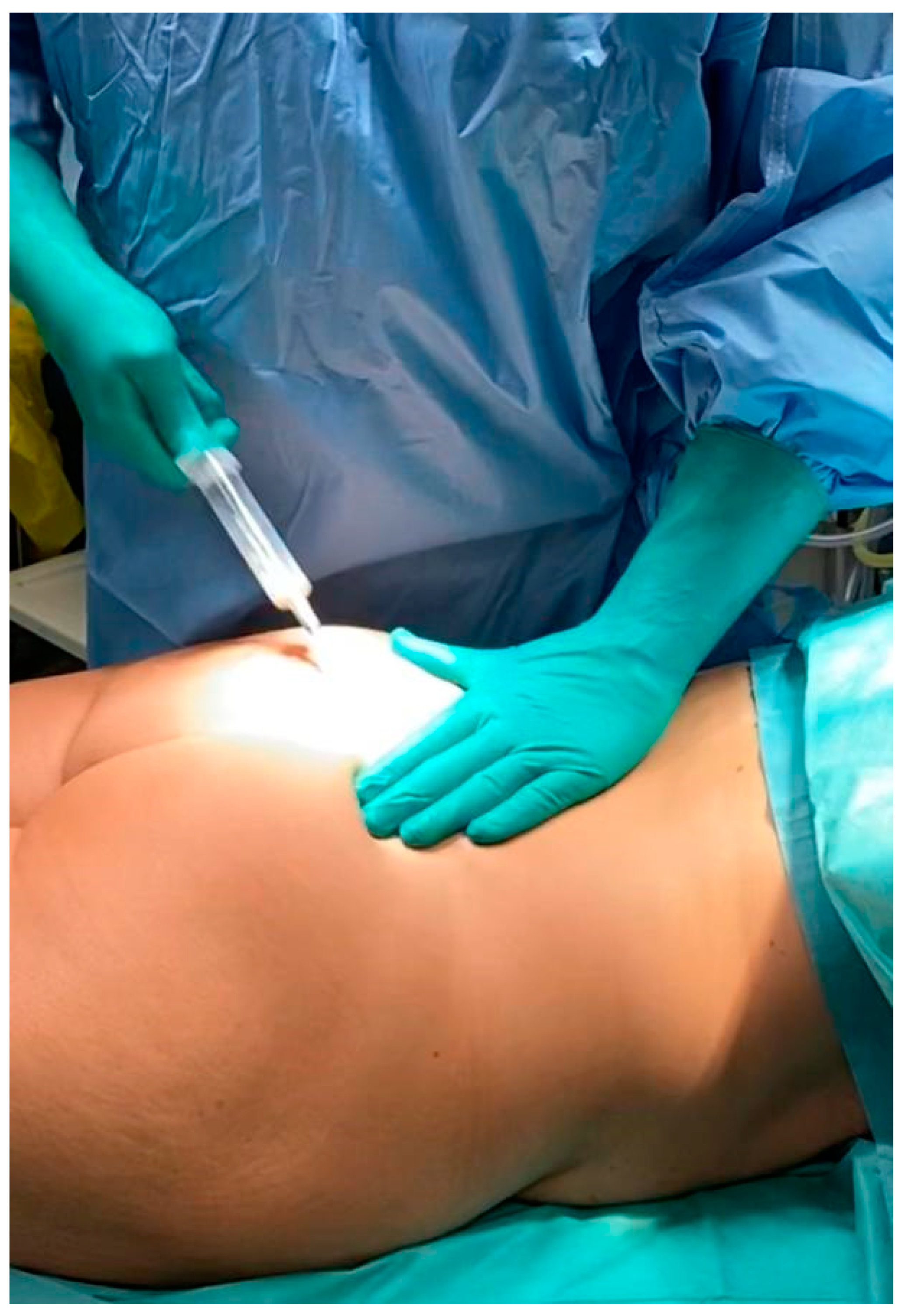
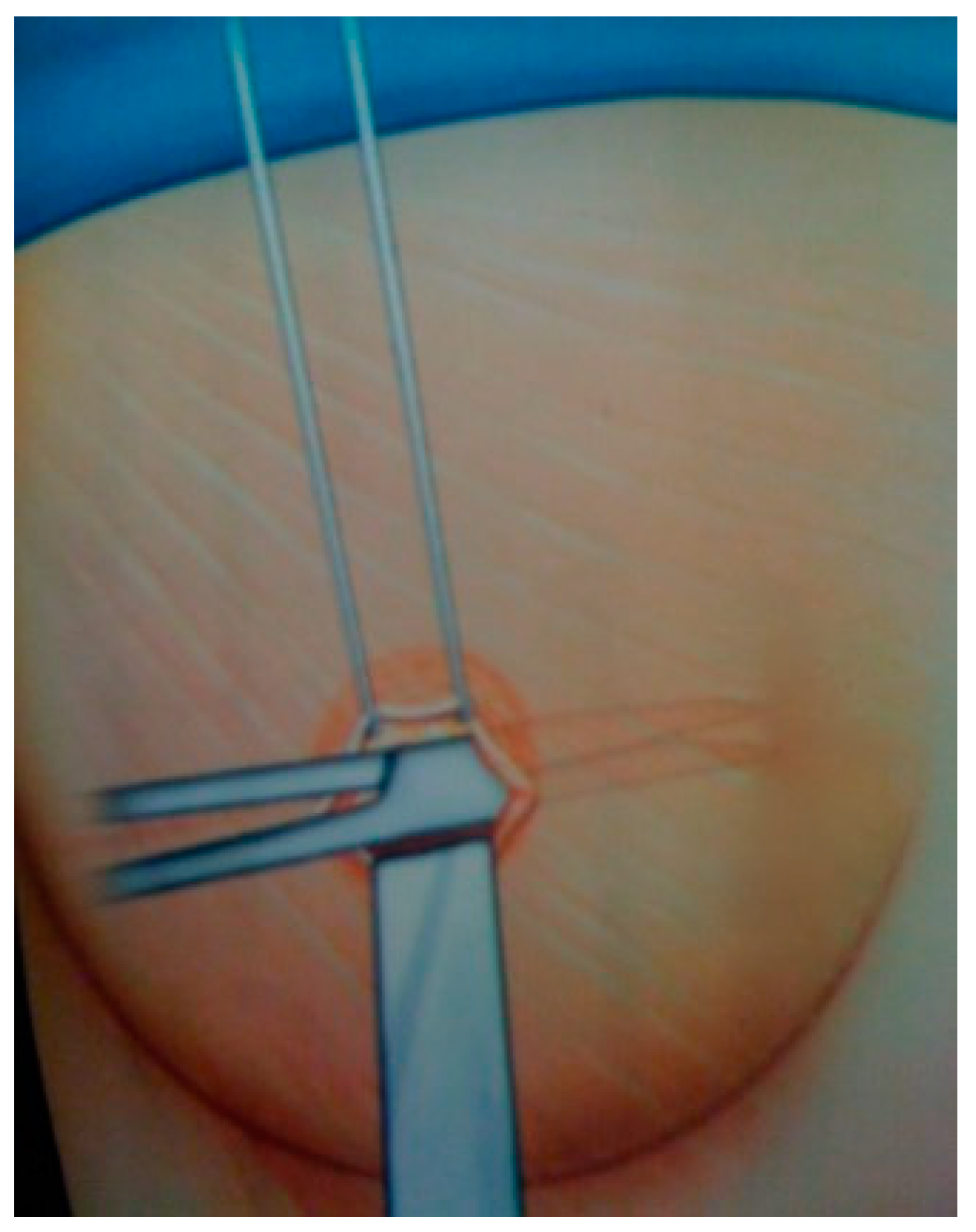
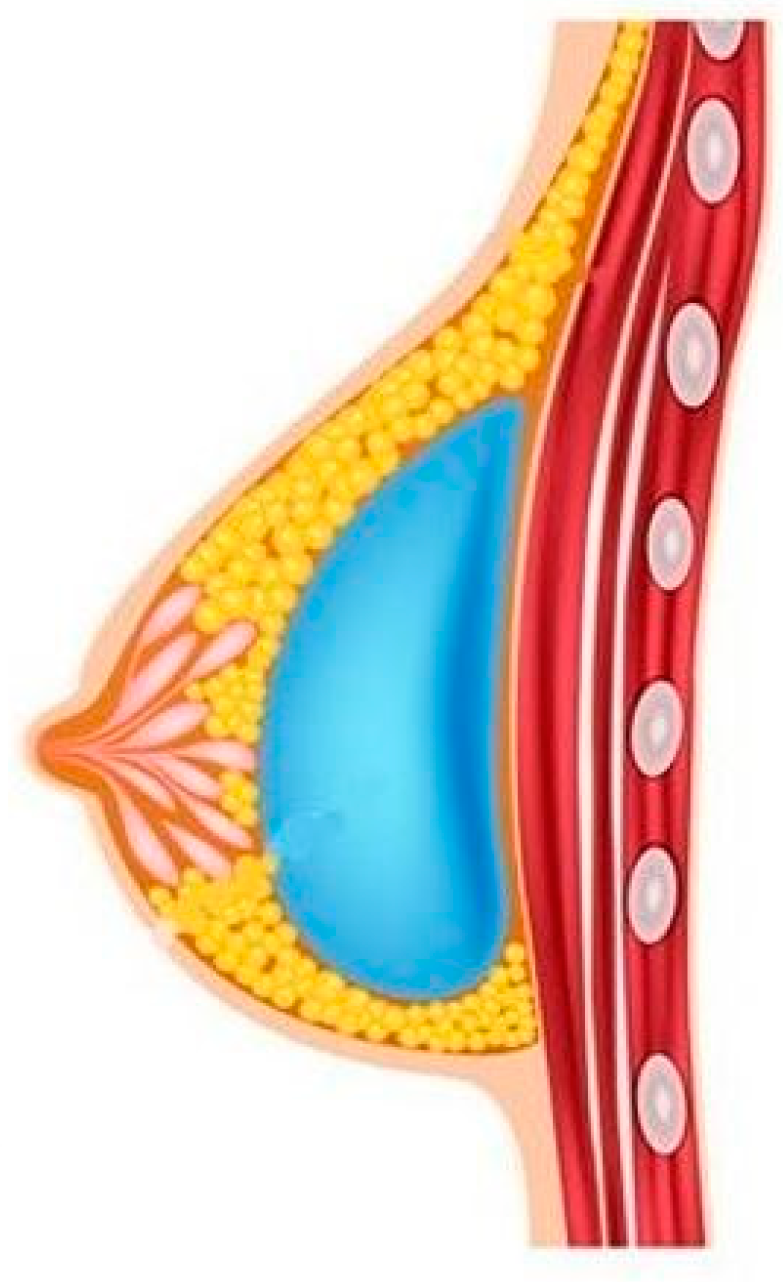
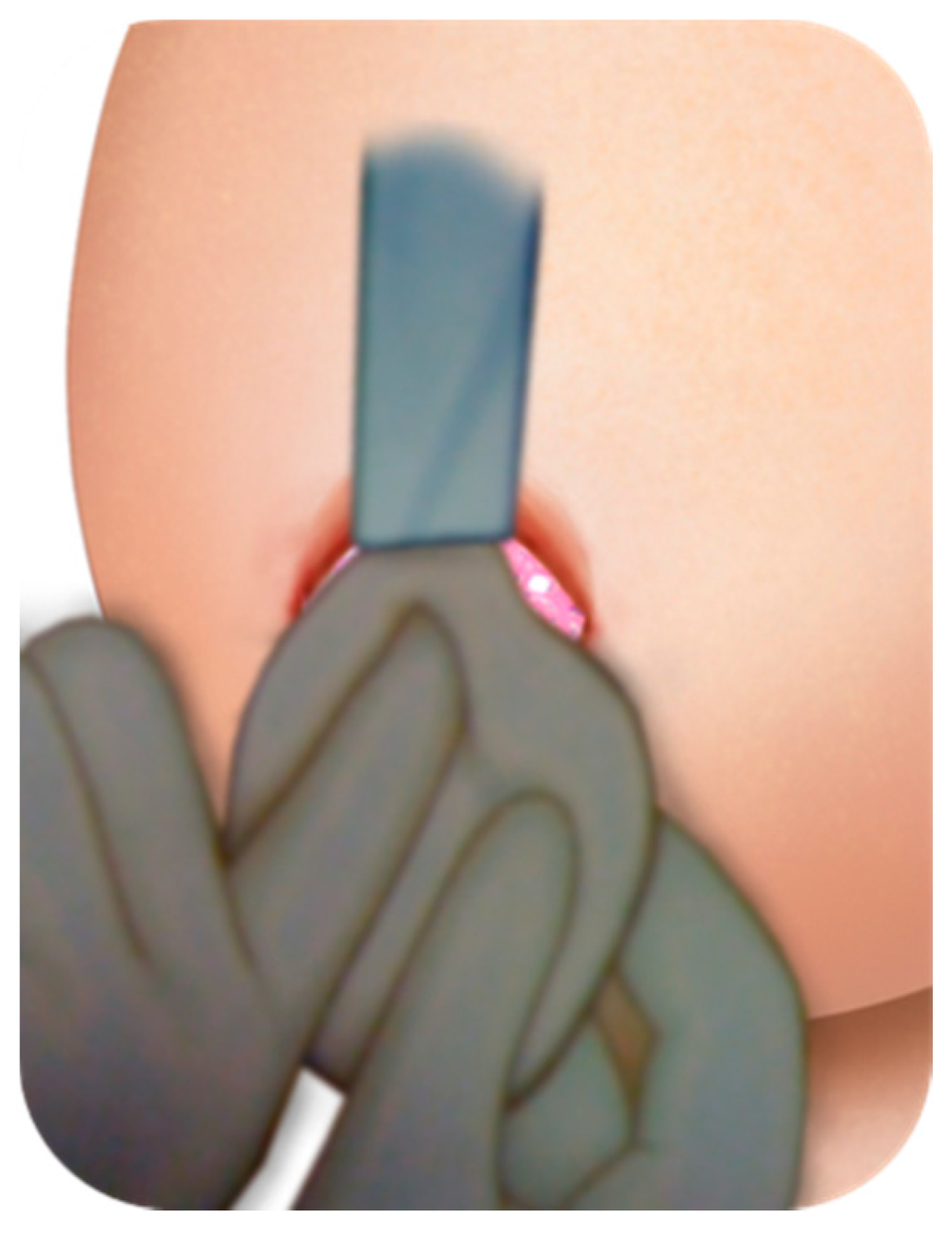
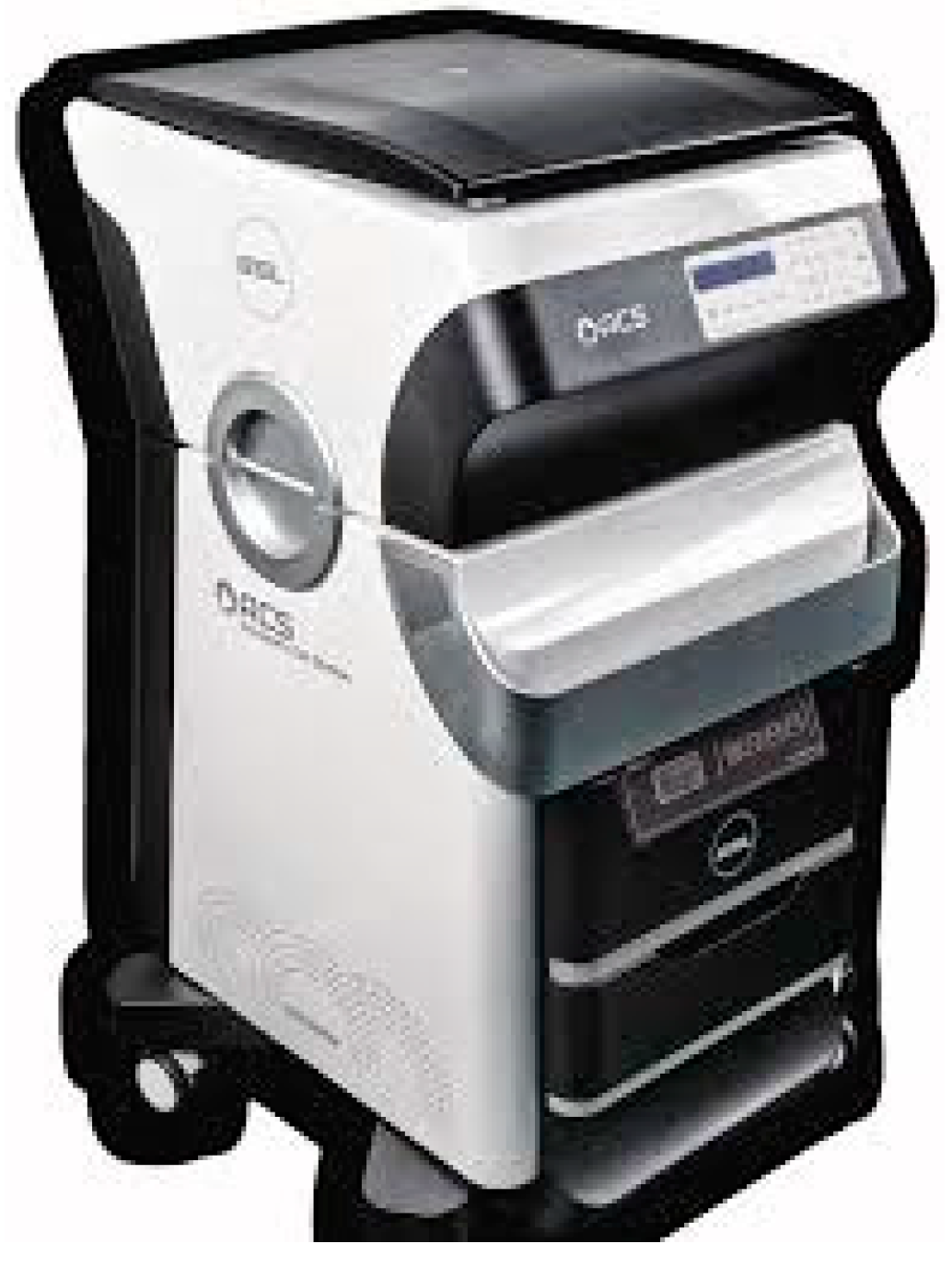

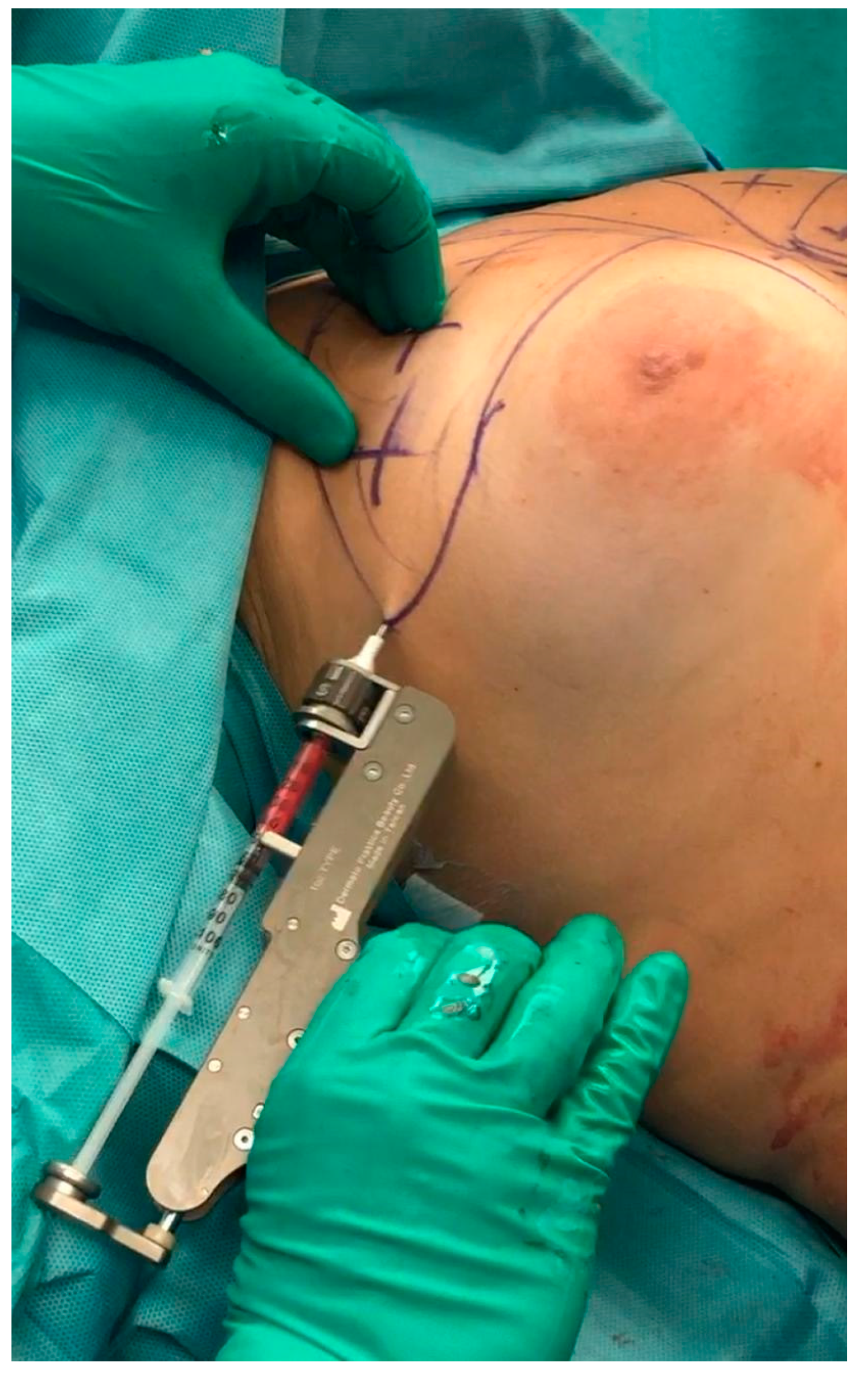

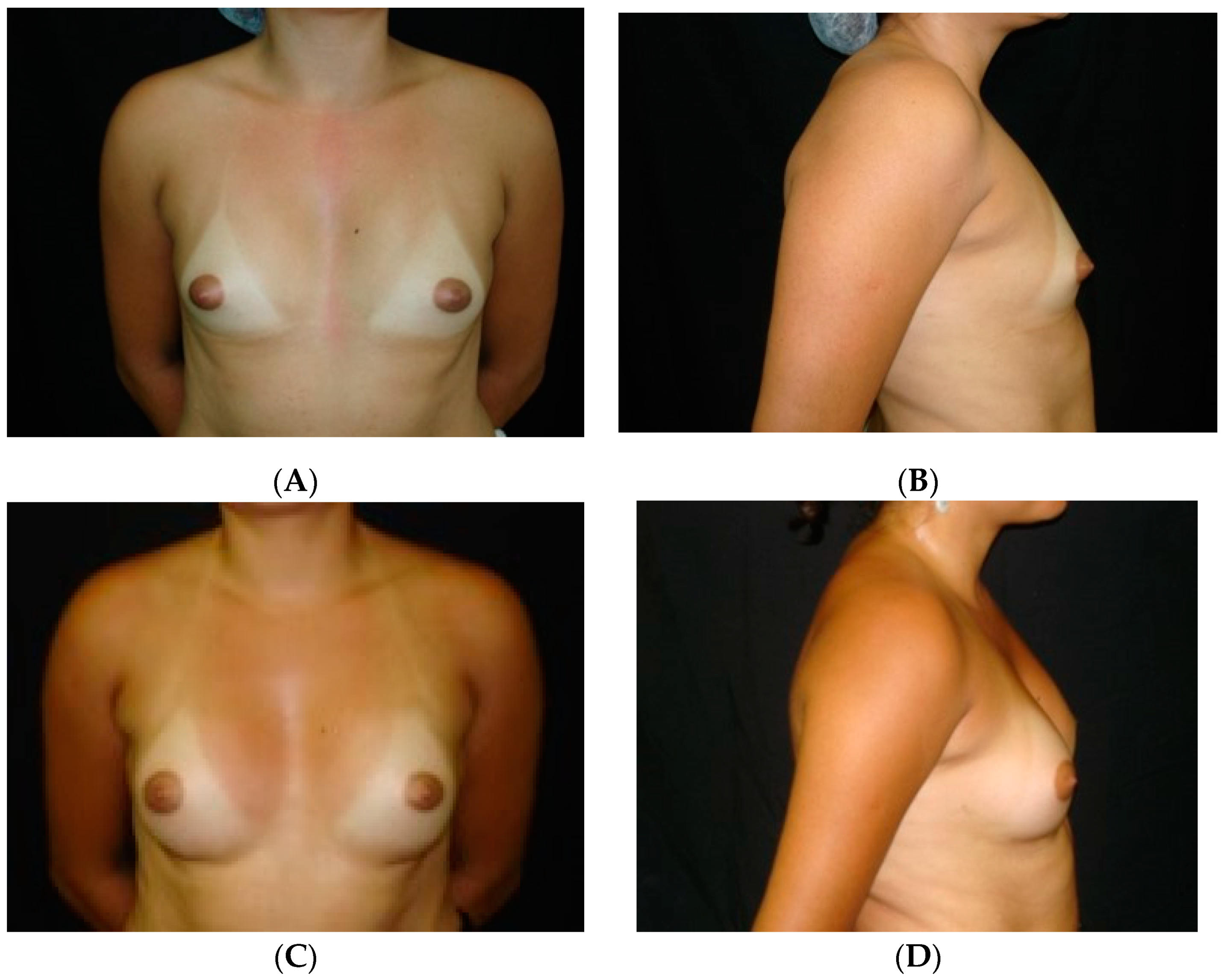
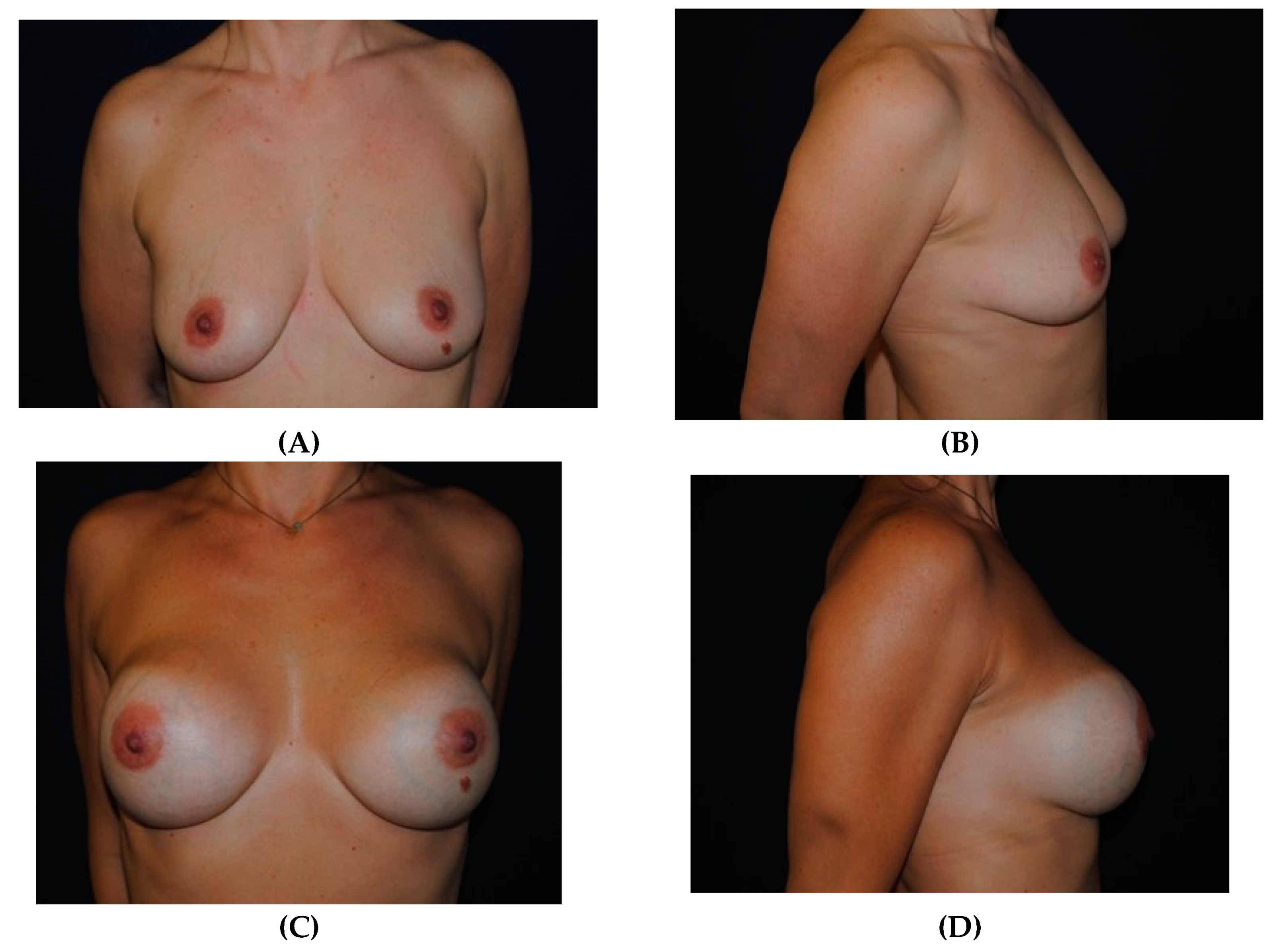
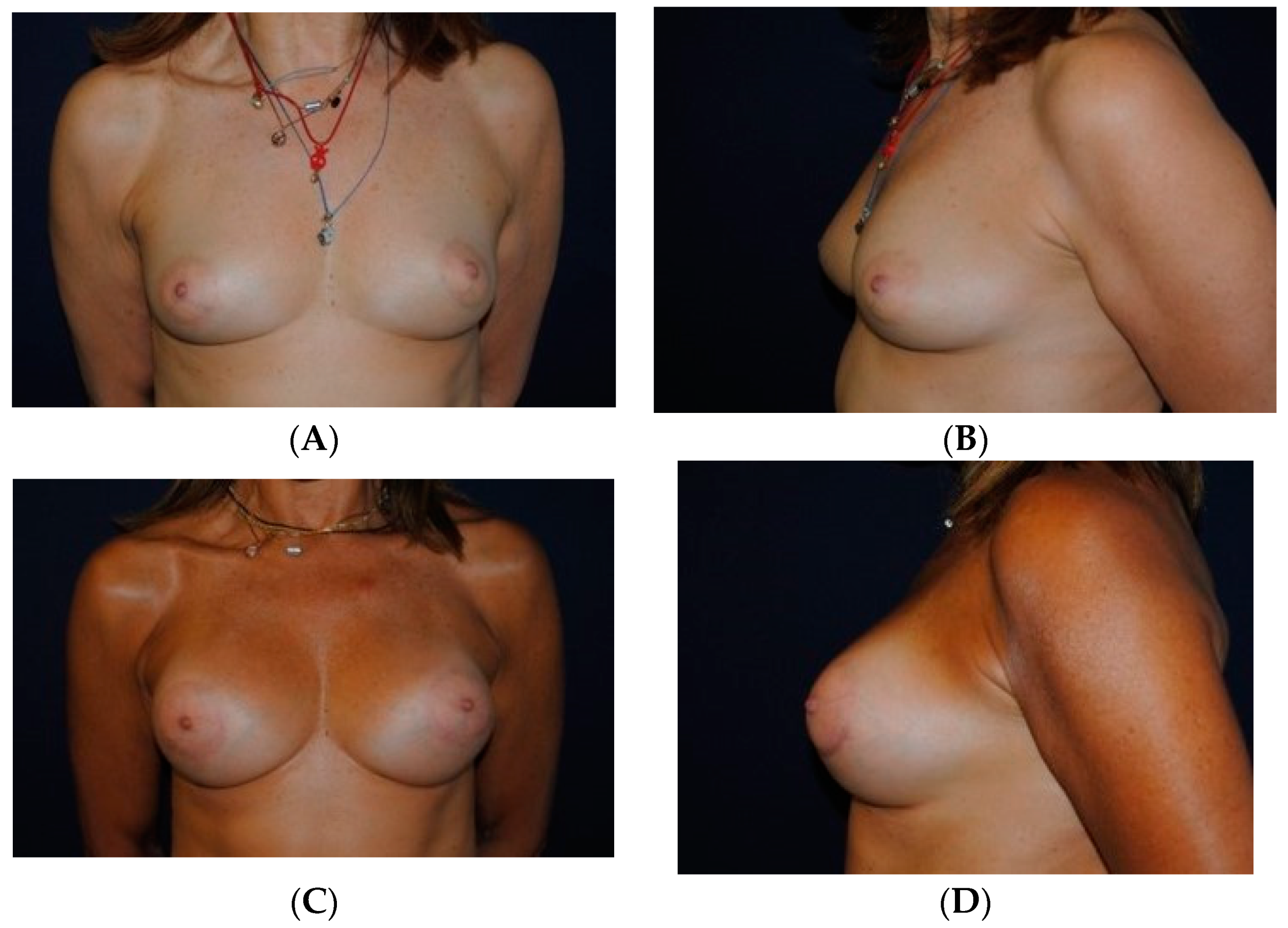
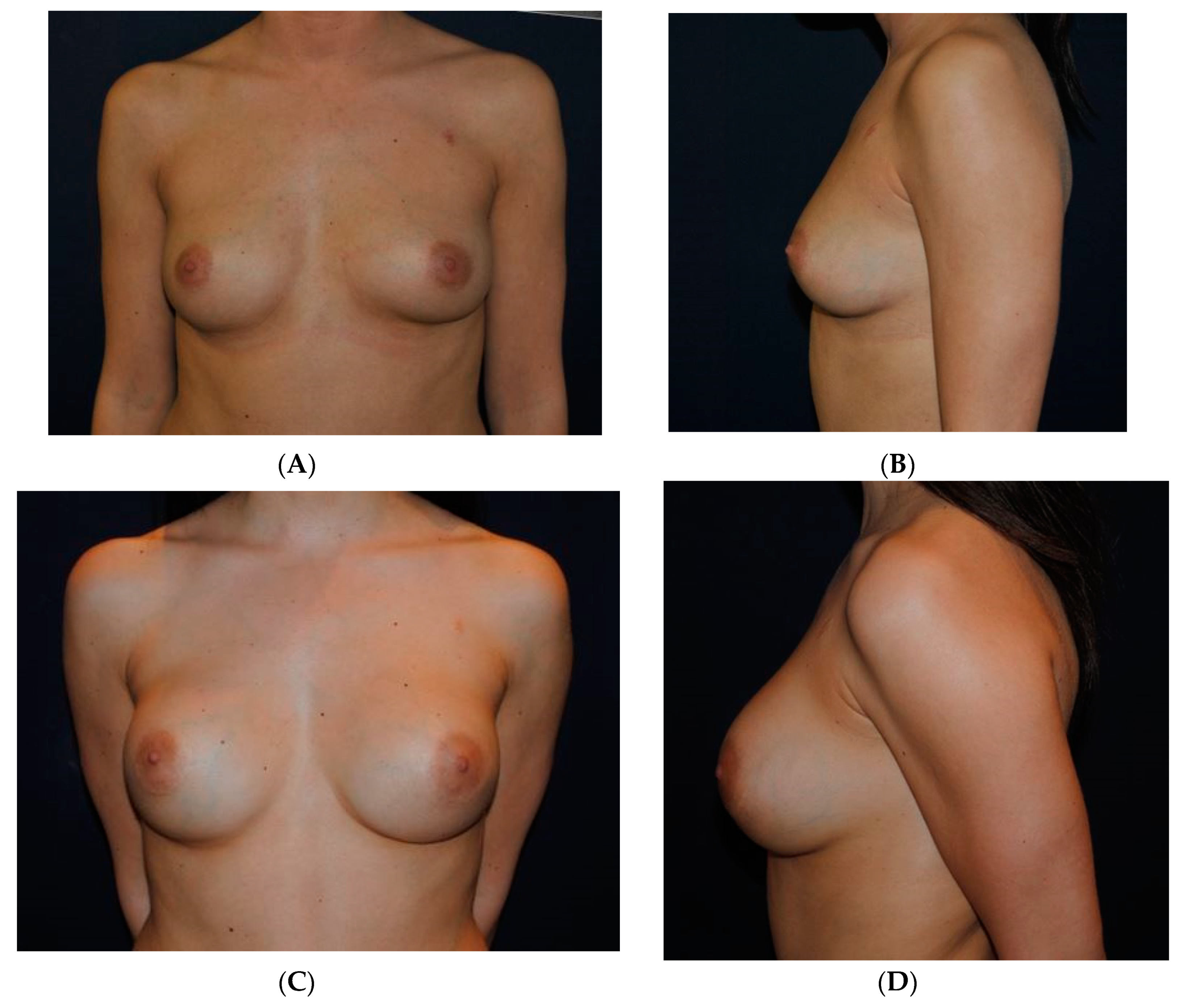
© 2020 by the author. Licensee MDPI, Basel, Switzerland. This article is an open access article distributed under the terms and conditions of the Creative Commons Attribution (CC BY) license (http://creativecommons.org/licenses/by/4.0/).
Share and Cite
Sterodimas, A. Silicone Implant Versus Silicone Implant Assisted by Stromal Enriched Lipograft Breast Augmentation: A Prospective Comparative Study. Medicines 2020, 7, 28. https://doi.org/10.3390/medicines7050028
Sterodimas A. Silicone Implant Versus Silicone Implant Assisted by Stromal Enriched Lipograft Breast Augmentation: A Prospective Comparative Study. Medicines. 2020; 7(5):28. https://doi.org/10.3390/medicines7050028
Chicago/Turabian StyleSterodimas, Aris. 2020. "Silicone Implant Versus Silicone Implant Assisted by Stromal Enriched Lipograft Breast Augmentation: A Prospective Comparative Study" Medicines 7, no. 5: 28. https://doi.org/10.3390/medicines7050028
APA StyleSterodimas, A. (2020). Silicone Implant Versus Silicone Implant Assisted by Stromal Enriched Lipograft Breast Augmentation: A Prospective Comparative Study. Medicines, 7(5), 28. https://doi.org/10.3390/medicines7050028




